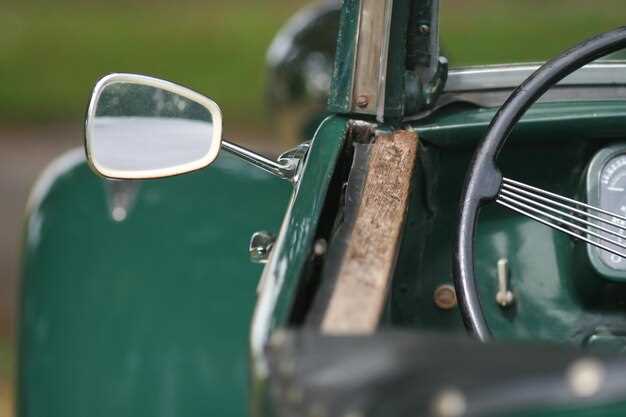
The Citroën DS, an iconic symbol of French automotive engineering, epitomizes classic design and innovative technology. Launched in 1955, this model redefined expectations for what a car could be, capturing the hearts of many with its stunning aesthetics and advanced features. The DS combines elegance with performance, making it a timeless choice for car enthusiasts and collectors alike.
With its distinctive streamlined shape and futuristic silhouette, the Citroën DS stands out as a masterpiece of 20th-century design. Its unique hydropneumatic suspension system not only provided a smooth ride but also set new standards in automotive technology. This combination of style and substance has cemented the DS’s place as a cherished classic in the annals of automotive history.
Embodying the spirit of innovation and artistry, the DS serves as a reminder of France’s rich automotive heritage. As we delve deeper into the allure of this remarkable vehicle, we will explore its design philosophy, engineering marvels, and the cultural impact it has made over the decades. Join us on this journey to uncover what makes the Citroën DS a true icon that continues to captivate the imagination of car lovers around the world.
Exploring the Unique Design Elements of the Citroën DS
The Citroën DS, a revolutionary French automobile, is renowned for its avant-garde design and innovative engineering. Launched in 1955, the DS quickly captured the imagination of car enthusiasts and design aficionados alike. Its unique design elements set it apart from contemporaries and continue to inspire admiration today.
One of the most striking features of the Citroën DS is its aerodynamic silhouette. The car’s elongated body, smooth curves, and teardrop shape were meticulously crafted to reduce drag and enhance fuel efficiency. This pioneering design challenged conventional car aesthetics and paved the way for future automotive styling.
Equally notable is the innovative use of materials in the DS. The car’s body was primarily constructed from lightweight materials, contributing to improved handling and performance. Furthermore, the introduction of the hydropneumatic suspension system represented a significant leap in automotive technology, allowing for a dynamically adjustable ride height that adapts to various road conditions.
The Citroën DS also showcases unique lighting elements that were ahead of their time. The characteristic “Goddess” headlights provided exceptional visibility, while the option of directional headlights allowed for improved cornering visibility. This feature exemplified Citroën’s commitment to enhancing safety and driver experience.
Inside, the DS offered an interior that was both luxurious and functional. The cabin design included an ergonomic dashboard with ergonomic controls, plush upholstery, and ample space for passengers. The use of a single-spoke steering wheel was not only a stylistic choice but also improved visibility of the dashboard, enhancing the overall driving experience.
In summary, the Citroën DS stands as a testament to French ingenuity in automotive design. Its combination of futuristic aesthetics, innovative technology, and practical functionality has secured its place as an iconic vehicle in automotive history.
Understanding the Engineering Innovations Behind the Citroën DS

The Citroën DS, often regarded as a classic in French automotive history, represents a remarkable amalgamation of innovative engineering and distinctive design. Launched in 1955, the DS introduced a variety of groundbreaking technologies that set it apart from its contemporaries. One of the most notable innovations was its hydropneumatic suspension system, which provided an exceptional balance between ride comfort and handling. This system enabled the vehicle to adjust its ride height and ensured a smooth driving experience on uneven surfaces.
Another engineering marvel of the Citroën DS was its aerodynamic body shape. The sleek, streamline design not only gave the car a futuristic aesthetic but also significantly reduced drag, enhancing fuel efficiency. The low coefficient of drag was a pioneering feature for that era, which further established the DS as a leader in automotive design.
The Citroën DS also integrated power-assisted steering, a feature that was rare at the time. This technology allowed drivers to navigate with minimal effort, enhancing overall driving comfort and control. Coupled with its disc brakes, which offered superior stopping power compared to the drum brakes commonly used in the 1950s, the DS embodied advancements in safety and performance.
Additionally, the interior of the Citroën DS was designed with the driver in mind, featuring comfortable seating, ergonomic controls, and a spacious cabin. The use of innovative materials and assembly techniques showcased Citroën’s commitment to engineering excellence, making the DS not just a vehicle, but a symbol of luxury and modernity in the automotive industry.
In summary, the engineering innovations behind the Citroën DS have left an indelible mark on automotive history. Its blend of classic French elegance and technical prowess continues to inspire car enthusiasts and engineers alike, making the DS an enduring icon in the world of automobiles.
Restoration Tips for Maintaining Your Citroën DS

The Citroën DS, a classic icon in automotive history, requires diligent care and restoration efforts to preserve its unique charm. Whether you are a seasoned enthusiast or a new owner, here are essential tips for maintaining your DS in pristine condition.
First, focus on the bodywork. The Citroën DS is known for its distinctive styling, but this also means that rust can be a significant issue. Regularly inspect the body panels and undercarriage for signs of rust or corrosion. If you identify any affected areas, address them promptly with proper rust treatment and repainting to prevent further damage.
Second, the suspension system is crucial to the performance of your classic. The DS features a hydraulic suspension system that may require specific attention. Ensure that the hydraulic fluid is at the correct level and periodically check for leaks. If you notice any performance issues, consider consulting a specialist familiar with Citroën’s iconic technology.
Next, take care of the interior. The upholstery and dashboard materials can wear over time. Use appropriate cleaners and conditioners to maintain the quality of the materials without causing damage. When replacing components, opt for original parts for authenticity and longevity.
Maintaining the engine is equally important. Regular oil changes and timely servicing of belts and hoses help ensure that your Citroën DS runs smoothly. Consider using parts that are specific to the DS for optimal performance. If you experience complications, seek mechanics who specialize in classic cars to guarantee expert care.
Lastly, store your classic Citroën DS appropriately. Keeping it in a temperature-controlled environment will protect it from the elements. If possible, use a car cover specifically designed for classic vehicles to provide additional protection against dust and potential scratches.
By following these restoration tips, you can ensure your Citroën DS remains a stunning representation of automotive artistry while providing an enjoyable driving experience for years to come.
